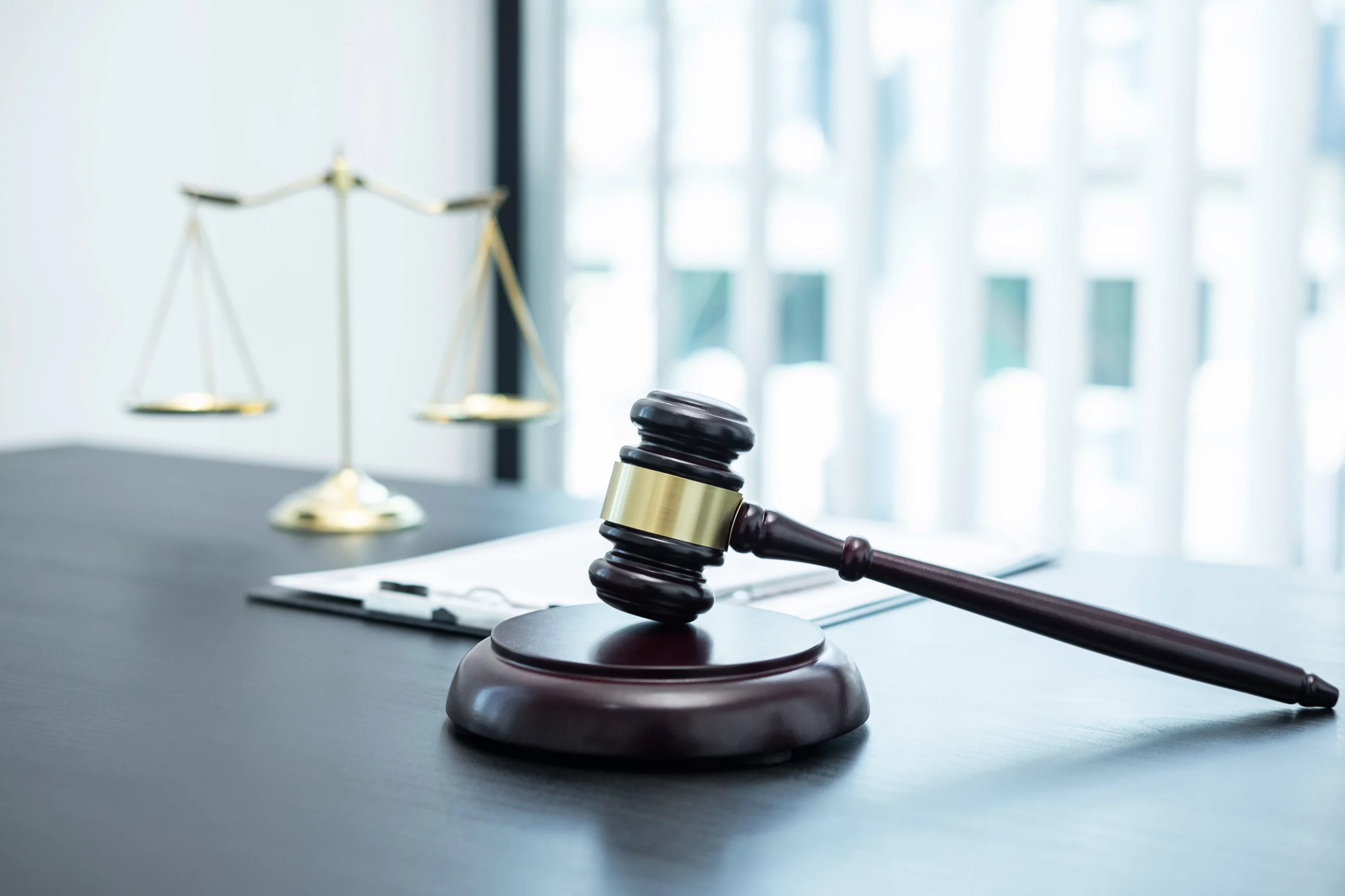What are the Most Frequent Injuries from Slip & Fall Accidents?
The Best Premises Liability Injury Law Firm
Premises Liability > Claims > Injuries
If another party caused your injuries, you deserve compensation. Explore common slip and fall injuries and their potential settlement value.
People are injured when they slip and fall because a property owner either allowed a hazardous condition to persist on their property or did not take reasonable steps to rectify the problem.
The physical effects of a fall on the body are not always predictable. Serious injuries to many body parts are possible, with the specifics depending on elements, including the landing surface, mechanics, fall angle, and more.
Slip and fall accidents can result in various injuries, and it’s important to know what those injuries are.
The immediate and long-term effects of your slip and fall will depend on the severity of your injuries. They will also figure out how much money you can get from the person who hurt you or their insurance provider.
Injury Claims
Free Consultation
NO FEE UNLESS WE WIN
Accidental Head Trauma from Slips, Trips, and Falls
Slip and fall head injuries can range from a little scratch to a serious concussion, even though sufferers often try to catch themselves by using their arms.
You could sustain brain damage if you:
- Reverse and fall
- One must fall forward and be unable to raise one’s arms.
- Falling and hitting your head on anything, such as a shelf at a store
In extreme cases, head injuries can be fatal or leave victims permanently disabled.
A person who has fully recovered from a mild head injury may be awarded several thousand dollars to pay their bills, time off work, and other hardships. With the assistance of an experienced lawyer, a victim of a slip and fall who suffers permanent impairment may be rewarded millions of dollars.
A person’s symptoms, rate of recovery, and amount of medical attention needed to return to normal functioning after an injury depend on the injury’s severity (or as close to normal as possible).
Brain injuries caused by trauma.
Traumatic brain injuries, or “TBIs,” are among the most serious head trauma a person can experience. Most of them are linked to long-term mental, behavioral, or physical damage.
Nearly half of all traumatic brain injuries (TBI) result from falls.
There is a high rate of permanent impairment among those hospitalized with traumatic brain injury (TBI), with about half of those patients suffering from such impairments.
The physical manifestations of a traumatic brain injury include:
- Headache
- Duration of unconsciousness: minutes to hours
- The discharge from the nose or ear is clear.
- Muscle weakness or tingling/paralysis in the hands and feet
- Deficiency in co-ordination
Hematomas and Closed Head Injuries
If a person falls and smashes their head on the floor, they may get a closed head injury.
When the skull remains intact, but the brain is injured due to a collision, this is known as a closed head injury. Closed head injuries can cause irreversible brain damage and other complications if they are not treated quickly.
Examples of closed-head injuries include:
- Contusions to the brain
- Damage to the brain’s blood vessels
- The brain swells and puts pressure on the brain tissue.
Hematomas, or blood clots, can grow on the brain if a fall severely damages the brain’s exterior blood veins.
When a hematoma forms in the brain, it exerts potentially lethal pressure on brain tissue. If doctors don’t release the pressure, brain function may be permanently impaired. Surgical removal of a hematoma may be necessary in some cases.
People with hematomas may appear fine at first but may lose consciousness at any moment. Someone who has banged their head in a fall and subsequently loses consciousness or has other symptoms should be taken to the emergency room immediately. Brain bleeding is a serious medical condition that requires immediate attention.
Injuries to the head, known as concussions, can have serious consequences.
A concussion can happen if your head hits the floor or something else.
Possible after-effects of a head injury include:
- Headaches
- Dizziness
- Ears that constantly ring
- Verbal slurring
- Having a confused look about you
- Consciousness Deprivation
A concussion can result in a temporary decrease in function. However, this is usually only a short-term issue. However, long-term effects from repeated concussions are possible.
Closed head injuries, including concussions, are a type of traumatic brain injury (TBI). Consequential brain damage from concussions has been linked to long-term consequences, such as the development of an inability to control seizures.
Individuals who suffer traumatic brain injuries due to a slip and fall may be entitled to millions of dollars in compensation. People who sustain moderate to severe TBI must make major adjustments to their daily routines and incur substantial ongoing medical costs.
Some estimates put the lifetime cost of mild brain damage at $85,000, the cost of a moderate brain injury at $900,000, and the cost of a severe TBI at $3 million.1
The total lifetime cost of traumatic brain injuries in the United States is about $76.5 billion. Indirect costs, including missed earnings and productivity and non-medical expenses, amount to $64.8 billion, whereas direct medical costs account for $11.5 billion.
Accidental Dislocations of the Hip, Knee, and Back
Back and neck injuries from falls are common. Whiplash, herniated discs, and even permanent damage to the spinal cord can result from a fall that injures the neck.
Herniated discs, broken vertebrae, and spinal cord injuries are all examples of back injuries that can be claimed as a result of a slip and fall. When victims land on their tailbones, they can be broken.
The elderly, in particular, are at increased risk for hip injuries due to slip and fall accidents. Additionally, a fall victim can sustain multiple types of injuries in a single incident, all of which depend on how the victim lands.
Tissue Tears and Strains
Back, neck, and hip injuries are common outcomes of slip and fall accidents.
An injury to the ligaments (the connective tissues that help hold the bones in place) that results in their overstretch or rupture is called a sprain. When muscles or tendons are overworked and torn, it’s called a strain.
A few signs that you may have suffered a sprain or strain are:
- Pain
- Stiffness
- Swelling
- Weakness
- Loss of mobility
In most cases, insurance companies will settle claims for soft tissue injuries, including sprains, strains, and whiplash injuries to the neck, for an amount that covered your medical bills and missed income, plus an additional 1 to 1.5 times that amount to account for your pain and suffering.
Traumatic Brain Injury
Whiplash is a type of injury that can be caused by the force of a fall. A whiplash incident might harm muscles, ligaments, discs, joints, nerve roots, and even the spinal cord.
Whiplash victims may not feel pain or show signs until several hours or days after the accident.
Among the symptoms are:
- Stiffness and soreness in the neck
- Headache intensifies whenever the neck is moved
- Symptoms include
- Decreased ability to move the neck.
- Headaches
Pain or discomfort in the shoulder, upper back, or arm
Whiplash injuries are painful and may require rest and medicine to alleviate the discomfort until they fully heal.
Problems with the Discs in the Neck and Back (Herniated Discs)
A person’s spine comprises individual bones called vertebrae, and discs act as shock absorbers between each pair. When one of these discs tears or bulges, it can put undue pressure on the spinal cord and the nerves that exit the spine; this condition is known as a herniated disc.
Herniated discs are common after a fall that causes significant stress or twisting to the back. They might show up anywhere in the neck or back.
Pain, tingling, numbness, and weakness can make all radiate from a herniated disc if the afflicted nerve is pinched or compressed. When a herniated disc becomes severe enough, surgery may be necessary.
Fractures and dislocations of the spine
Vertebral fractures and dislocations can occur anywhere along the spine, from the skull to the tailbone, in the event of a serious fall. The severity of these wounds is proportional to the velocity with which the victim fell or collided with whatever it was they impacted. Surgery, painkillers, and spinal braces may all be part of the treatment plan.
An injury to the ligaments or bone is often the cause of dislocation. If your neck or back bones shift, you have a dislocation.
A dislocation can bring on spinal instability. In addition, dislocations of the spinal column always have the risk of causing injury to the spinal cord, necessitating surgical intervention in most cases.
Dislocations of less significant joints may realign themselves using a collar or brace with time.
Injuries to the Spinal Cord (SCI)
A spinal cord injury occurs when the spinal cord, the body’s principal pathway for nerve impulses from the brain to the rest of the body, is damaged.
More than 30% of spinal cord injuries in the US result from a fall.
Spinal cord injuries can happen in the neck or the back and frequently occur alongside other neck injuries, including fractures and dislocations.
Surgical intervention is usually necessary for patients who develop paralysis below the site of damage. Some people who survive spinal cord injuries do so with a severe impairment that they require a respirator for the rest of their lives.
An expert personal injury attorney should be consulted to guarantee the greatest financial outcome for the slip and fall victim who has suffered spinal cord damage or other catastrophic condition.
Tibial fractures
The triangular tailbone sits at the very base of the spine. When one falls backward, they risk injuring or breaking their tailbone.
Some people have trouble sitting for long periods after suffering a tailbone injury due to the related pain. While time is needed for recovery, surgery is usually unnecessary for these injuries.
Bursa injuries and hip dislocations
In a fall, the hip joint can be dislocated if it is jarred out of its socket. Extreme suffering often accompanies hip dislocations. Injuries to the nerves in the foot and ankle are common and can cause a loss of sensation.
In most cases, a dislocated hip can be put back into place by a doctor without surgery. Most people who dislocate their hips need crutches and physical treatment to regain their feet.
Hip bursitis develops when these fluid-filled sacs around the hip become inflamed. Hip and thigh discomfort are the most common complaints from those suffering from this illness.
Hip bursitis makes it painful to walk. Therefore patients often need physical therapy to recover.
Disabling Hip Fractures
Hip fractures are a severe type of slip and fall injury. Nearly all hip fractures require surgery, and some will need metal plates and screws placed in the bone to hold it together.
Recovery can take months, requiring physical therapy and rehabilitation. Elderly slip and fall victims may never recover from a broken hip.
Symptoms of a broken hip include pain, one leg turned at an odd angle, or one leg appearing shorter than the other. If you suspect a hip fracture after a slip and fall, call 911 and try to keep the person warm and still until emergency help arrives.
Fractured hips, spinal cord damage, and severe brain trauma are the kinds of permanently disabling injuries that can be life-altering for the slip and fall victim and their families. Liability for the at-fault property or business owner can run into hundreds of thousands of dollars or more.
Damage to the Upper Extremities and Lower Extremities
Shoulder, arm, and leg injuries are all possible outcomes of a slip and fall.
When people fall, whether backward or forward, they automatically reach out to catch themselves with their arms extended. This action can save you from more serious harm, but it comes with a risk of harm to your shoulders and limbs.
Bone fractures
Slip and fall incidents are a leading source of injury, especially fractures. Arm, wrist, and hand fractures are more likely to occur during a fall if the victim reaches for an object or tries to break the fall with their hands.
Leg, ankle, and foot bones can also be shattered due to falls on uneven flooring, badly maintained stairs and walkways, or parking lot hazards like potholes
It might take a few weeks to recover if the break is small. Sometimes the fracture is so severe that it necessitates months of medical care, including physical therapy, surgery, and pain medication. Bones break can cause deformity, numbness, and even loss of function.
Even though some people may need surgery, most people who break an arm, wrist, or ankle don’t have to make major adjustments to their daily routines or care routines. The typical range for pain and suffering damages associated with bone fractures is between $60,000 and $300,000.
Fractures of the Shoulder from a Fall
It is more likely that a person will suffer a rotator cuff tear or another shoulder injury from a slip and fall if they fall directly down or land on their sides. Another common cause of rotator cuff tears is a fall or blow to the upper arm or back.
The four muscles of the upper arm and shoulder create what is known as a rotator cuff. This group of muscles allows you to raise and rotate your arm. The cuffs are attached to your arms through tendons. A rotator cuff tear occurs if the tendons are torn.
Signs of a torn rotator cuff include:
- Sensitivity and pain when in use
- No longer able to raise your arm.
- Inability to get comfortable sleeping on the afflicted side
- Pain from confinement is a common complaint.
After the injury has healed, some patients need to undergo physical therapy to regain their shoulders’ full range of motion.
Traumatic Shoulder Dislocation or Separation
When the ligaments in the shoulder are torn, the result is a separation or sprain. When a person falls and tries to break their fall by extending a hand or arm, they may suffer a sprain. Shoulder sprains can cause excruciating discomfort and limited motion.
A sling, physical therapy, and even surgery are part of the treatment plan.
Shoulder dislocations are also possible after a fall onto an outstretched hand, arm, or shoulder or from a violent twisting motion. Emergency medical care is required for a dislocated shoulder.
A doctor’s mild traction applied to the shoulder can help realign a dislocated shoulder. As a rule, surgical intervention is unnecessary.
Shoulder injuries resulting from a slip and fall are often compensated for one or two times the amount of economic losses. A rotator cuff injury that requires surgery may result in a claim of $80,000 to $100,000.
Knee Injuries from Slipping and Falling
The knee is a complex joint where several bones and ligaments meet. A knee injury is more likely if the victim twists their knee as they fall.
Anatomically, the thigh and the lower leg are connected by ligaments. The medial collateral ligament (MCL), the posterior cruciate ligament (PCL), and the anterior cruciate ligament (ACL) are the four ligaments that make up a knee (ACL). One or more could be harmed by a fall.
Severe discomfort, swelling, buckling, or giving way of the knee when walking are all symptoms of ligament damage. Knee ligaments take a long time to mend, and surgery is typically necessary for therapy.
The following are some more causes of knee injuries:
- Injuries to the tendon
- Meniscus (cartilage) injuries
- Knucklecaps dislocated
- Overextended knees
Pregnancy-Related Falls
Most pregnancy-related injuries are the result of falls. And they account for a quarter of all pregnancy-related trauma cases.
Seventy-two percent of pregnant women who fall do so on stairs or other slick surfaces.
Due to physical changes, pregnant women are more likely to fall than other women.
Injury from a fall during pregnancy, especially in the third trimester, can be quite upsetting. The uterus is still contained within the pelvis and shielded from harm during the first three months of pregnancy. As a further layer of defense, the amniotic fluid cushions and insulates the developing infant.
There is an increase in the frequency and severity of injuries to both mother and child in the later stages of pregnancy. Serious consideration should be given to falls resulting in a stomach blow.
Any pregnant woman who falls unsteady on her feet should visit a doctor immediately.
The following are examples of symptoms:
- Stomach ache
- Bleeding from the cervix
- Contraction of the uterus
- A baby’s diminished or absent activity
Pregnancy-related risks associated with falls include:
- There was a premature birth.
- Abruption of the placenta (the placenta coming partially or fully off the internal uterine wall)
- Amniotic fluid leakage
- Birth Injuries, Including Those to the Baby’s Skull
- The mother or infant is experiencing a life-threatening hemorrhage.
The baby’s injuries and overall health will dictate the treatment course. Some mothers may be just fine. Others may need to have the baby right away, while still others may need to be on bed rest for the duration of their pregnancy.
Concept of the “Eggshell Skull”
It is possible that the insurance company for the person at fault in a pregnant woman’s slip and fall would cite her pregnancy as a defense. They may say that she wouldn’t have fallen if she weren’t pregnant.
Using this reasoning, the insured might be less responsible for the accident. An insurance company, however, cannot make this argument due to the eggshell skull theory.
The “thin skull rule,” also known as the “eggshell skull concept,” states that a victim’s vulnerability to an attack cannot be used as a legal defense. A person or group at fault must “accept their victims as they are.”
When someone else’s carelessness leads to a pregnant lady falling, they must pay for the resulting medical bills and other damages. Both of them are to blame for the deterioration of any health problems she had before the fall.
Possible injury compensation
Those who suffer injuries due to a slip and fall should file a claim for damages against the property owner or manager who was responsible. Damages are typically classified as either monetary or nonmonetary.
Examples of economic losses are:
- Current and potential healthcare costs
- Reduced Paychecks
- Lack of opportunity for future gain
Indirect costs might include things like
- Anguish and distress
- Distress in the mind
- A decrease in happiness
- Separation anxiety
Economic and non-economic damages are typically split evenly in settlements.
Influencing Factors in Personal Injury Settlements
The circumstances surrounding every slip and fall claim are unique. The amount that an injured individual is awarded in compensation may depend on several things.
Consider the following examples of such elements:
- The seriousness and cost of any injuries sustained physically
- Consequences that will arise from the injury in the future
- Physical or mental impairment
- Limits on injury
- The maximum coverage of any relevant insurance policies
- Strengths and limitations of the assertion
- To what extent could both parties possibly be at fault for the incident?
Greater damages should be awarded when injuries are more serious.
Damage awards for slip-and-fall victims vary depending on the severity of their injuries. Similarly, a mother who delivers a premature baby with difficulties will be compensated more than a mother who stays in the hospital for just one night for monitoring.
Attorneys specializing in personal injury law are the best bet for victims of serious or complex slip and fall accidents seeking compensation. It is common knowledge that claimants without legal representation receive lower settlement offers from insurance companies.
Consultations with seasoned injury attorneys are free of charge. Most accept cases on a contingency fee and offer free initial consultations to ensure you incur no costs.
Learn how you and your loved ones can benefit from legal assistance at no risk and no cost to you.

FREE CASE REVIEW
We are standing by ready, willing, and able to help you. You can schedule a free consultation here on our website, or give us a call and talk to us. Whatever you prefer, we will accomodate you!








